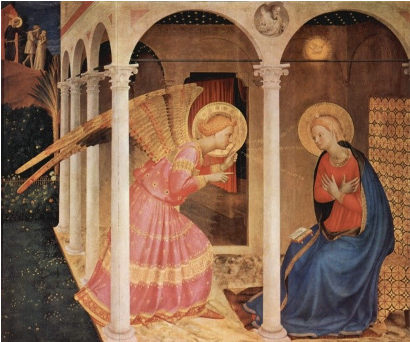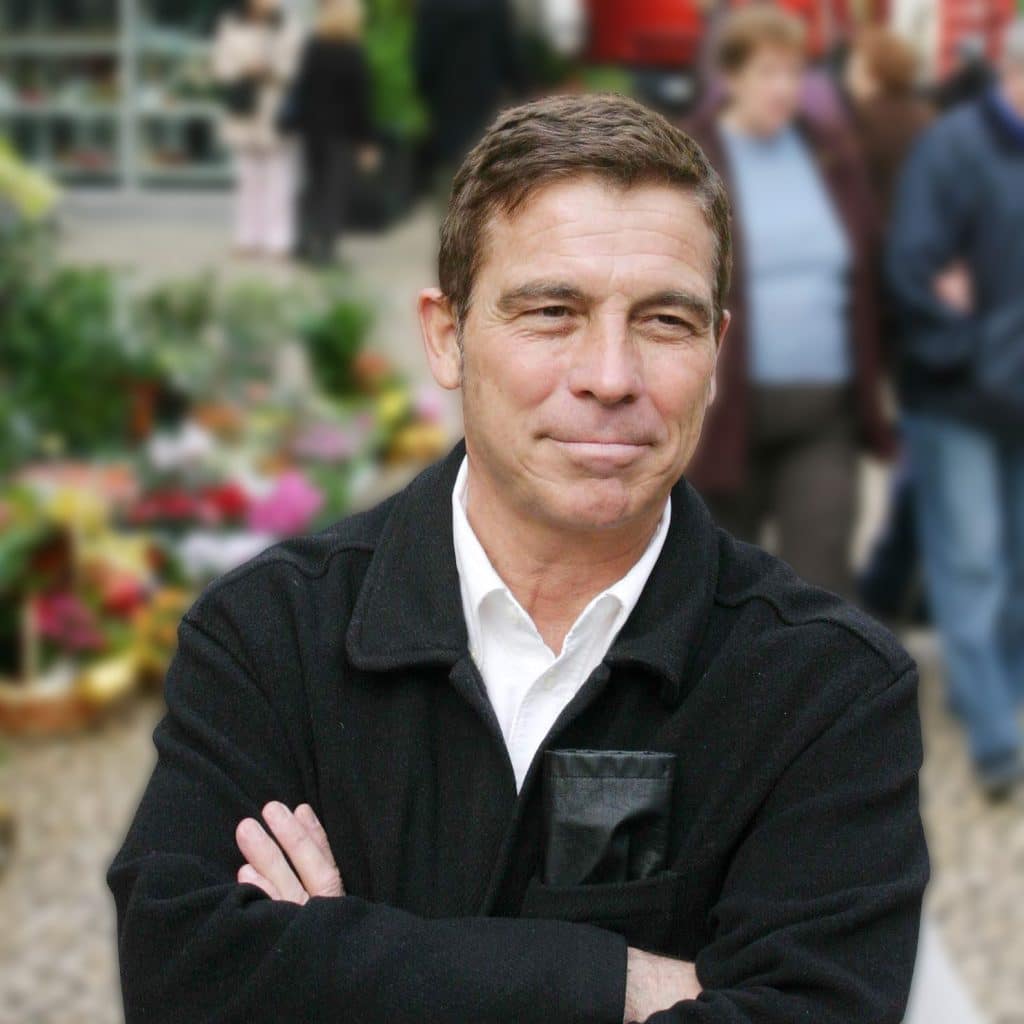Martin A. Bacich
HDR Architecture, Inc., San Diego, California (USA) martin.bacich@hdrinc.com (email)
www.mabacich.com (personal website)
Introduction
In the Christian New and Old Testament, two human positions are repeatedly illustrated; that of remaining faithful to the revealed truth of the Covenant, i.e. Yahweh’s path for his creature’s fulfillment, or following man’s way, that of idol.
The Catholic tradition is founded on the acceptance of this Revelation, and human nature is seen as illuminated by this acceptance. Although accepted, God’s creature is weak and betrays God, and by doing so betrays his own nature. Life is the work to re-establish this fundamental relationship with the Creator, even though each attempt can itself be only an exercise in pride. The parable of the Tower of Babel is an example of this prideful effort, as man attempts to build his own pathway to heaven.
All human effort, by its nature, serves either oneself or another. The difference is found in the intention, or the subject and object of one’s work. By adhering to the revealed truth of the Incarnation, human work becomes the necessary condition to encounter the divine in reality. From the most menial to the most profound, human work becomes the vehicle in which humanity matures to recognize its nature as infinite need answered by infinite love.
Pope John Paul II’s encyclical Laborum Exercens helped illuminate the sanctity of human work in light of earlier catholic social teachings. New Catholic communities such as Memores Domini and Heart’s Home articulate through their respective missions the sanctification of work. These modern expressions are deeply rooted in Catholic monasticism, especially the Benedictines, whose lives emphasized reaching sanctity through prayerful and silent human work.
The Benedictine Workshop
The historic significance of the Rule of St. Benedict for Catholicism, and therefore western culture, cannot be overlooked. The ultimate aim of the life of discipleship was an eternal life, but not one distant from earthly life. The Rule proposes full human development of the subject here on earth as the path to the eternal. Prayer, work, & silence were, and are, the fundamental conditions within the monastery, i.e., “The workshop where we are to toil faithfully at all these tasks…and the stability of the community.”[1] for this human development.
The model of the monastic life was the early church, specifically the descriptions of communal life as lived in the Acts of the Apostles. The mandate given states “When they (monks) live by the labor of their hands, as our fathers and the apostles did, then they are really monks.”[2] And who is a real monk, but a freely loving, and obedient son; “This is advice from a father who loves you; welcome it, and faithfully put it into practice. The labor of obedience will bring you back to him from whom you had drifted through the sloth of disobedience. “
The labor proposed is not only physical, but existential, and totalizing. Labor is the furnace of the soul, tempering and purifying. The tool of the enemy is not necessarily sinfulness or mistakes; for “judging himself always guilty on account of his sins”[3] is an assumed reality of the daily struggle. Instead, “Idleness is the enemy of the soul.”[4]
The monasteries of the Benedictines, and later the Trappist and Cistercians, became, and remain, places of production in support of the community. This support was not only for the physical sustenance but the sustenance of the soul, leading to sanctification. The pattern of prayer, labor, and silence were, and are, that which determined the well documented physical and programmatic needs of the monastery.
On Human Work
Pope John Paul II’s encyclical Laborum Exercens (On Human Work), was published in 1981. The encyclical was of particular importance to a post-Vatican II church still living in the throes of the Cold War. It addressed the dignity of human work, a theme central to Marxist and Capitalist thought. Although written in this historic context, the intent was not a political treatise, but instead an articulation of the true subject of work; the human being. The theme of human work spoke to the centrality of the lay faithful, and faith lived in daily life as emphasized by Vatican II.
The importance of work as defined in Laborum Exercens had its foundation in the “inscrutable mystery of Redemption in Christ…which shows us all the wealth and at the same time all the toil of human existence on earth”[5] As illuminated in Genesis, “Man is the image of God partly through the mandate received from his Creator to subdue, to dominate, the earth. In carrying out this mandate, man, every human being, reflects the very action of the Creator of the Universe.”[6]
The Pope clarifies, “This dominion in a certain sense refers to the subjective dimension even more than the objective one: this dimension conditions the very ethical nature of work…the one who carries it out is a person, a conscious and free subject…”[7] Finally, “she (the church) sees it as here particular duty to form a spirituality of work which will help all people to come closer, through work, to God, the Creator and Redeemer, to participate in his salvific plan for man and the world…[8]
The Memory of God
Memores Domini has its origin in the Catholic ecclesial movement of Communion & Liberation, founded in the 1950’s Italy, and its founder Monsignor Luigi Giussani. The consecrated life of Memores Domini, recognized by the Holy See by decree of the Pontifical Council for the Laity in 1988, is lived with obedience to the three evangelical counsels of poverty, chastity, and obedience. Along with the counsels, special emphasis is placed on memory (or “contemplation, understood as the memory of Christ that tends to be continuous…”), silence, (“…the most serious norm for the life of the House, indispensable, for silence is not simply the fact of not speaking, but consists in the work of tending towards the perception of the presence of Christ”), and work ( “…living his own job or profession as the place of memory of Christ”9).
The houses are the physical source of community, stability, and memory. Their locations are determined by the adherents who will live in the house, and the proximity to their work, and not the other way around. It is suggested that a house range from 3 to 12 members. They are not newly constructed structures, but existing homes. The interior, similar to the exterior, does not have additive or required design elements, but instead tend to have a certain subtractive element, or sparseness, in design and furnishings..
The only prescriptive design elements required are a reproduction of the Annunciation of Cortona by Fra Angelico, and the daily rule of prayer and communal life in the house. Both serve as a reminder to silence, which is a fundamental characteristic of the life. A posting of a quote a from the Acts of the Apostles, (Philippians chpt.1, 6,9-11,) is also required . drawing attention to St. Paul’s prayer to his readers “that God who began this good work in you will bring it to completion on the Day of Jesus Christ.”

10
Directory of the Ecclesial Association Memores Domini
Fra Angelico, Annunciation of Cortona: The image and reproduction are in the public domain worldwide. The reproduction is part of a collection of reproductions compiled by The Yorck Project. The compilation copyright is held by Zenodot Verlagsgesellschaft mbH and licensed under the GNU Free Documentation License.
Other interior design considerations are programmatic by nature. Each adherent must have their own room with strict rules protecting the privacy of each individual. There is a requirement for a chapter room or “capitolo” for common prayer and meetings. Chapels are not found because of the associations stress on being a presence in the larger community and parishes.
Work is the privileged place for the encounter with the living God for the adherents of Memores Domini. It is the place, outside of the formal house, where Christ is encountered. Obedience to both the rule of the house, and the concrete conditions of one’s work, is the focus of Memores Domini’s mission, and the vocation of its adherents.
Heart’s Home
The organization, Heart’s Home, is another recent example of the sanctification of work and daily life. Supported by The Molokai Fraternity, a group of religious, lay consecrates, and permanent members who support Heart’s Home, its homes are places of hospitality and charity. First founded in 1990 by Father Theirry de Roucy the mission of each Home is to provide a true home for the heart for the neighbors and neighborhood in which the house has been donated. Each house is given to the organization by the local church, or private donor, always at the bequest of the local bishop. The Home becomes an opportunity to practice the labor of love, through hospitality, compassion, and charity. It is stressed that “Presence is required, not action.”[9]
The workers of each Home are temporary volunteers who give 1 to 2 years of time, alongside the more permanent members. As a non-profit ,each Home is supported not by the paid professional work of its volunteers and adherents, but instead by donations. The work, or daily labor, for each individual becomes the service of charity to whomever the house serves.
The houses of Heart’s Home have few programmatic needs that differ from any other home. A chapel with the Blessed Sacrament, given by permission of the local bishop is required in each home. Communal daily prayer, mass, and an hour of silent contemplation in the chapel is required. A common sitting area is also required as the place where everyone with any need from the neighborhood is welcome. Individual rooms are not required, but instead separate shared rooms for women and men are required, dependant on the size and number of members living in the particular house.
Elements of importance for each Home are beauty and simplicity. As quoted by Fr. Paul Anel of Heart’s Home New York, “ No matter how poor the house and neighborhood, no matter the size, the beauty of the house is what makes it a home. Perhaps a single piece of art, or a vase of flowers; beauty is necessary for us and those who visit, as a sign of Christ present.”[10]
Conclusion
Through God’s methodological choice of the Incarnation, a definitive response was given to man’s constant attempt “accommodate” the Infinite. All space, whether sacred or profane serves only to exemplify the sacramental fact of reality. Every day work, the concrete, the earthly, becomes the place where His spirit is encountered. The “idea” of God and His seeming distance from real human need are lessened. The life and reality of new communities such as Memores Domini and Heart’s Home help illustrate that through their communal order and emphasis on work, an ever new approach to encountering the Infinite is defined. Their modern charisms are deeply rooted in the earliest monastic experiences, such as the Benedictines, whose emphasis on prayer, work, and silence, demonstrate the fundamental importance of meeting God where he can be found; in the heart of daily labor.
[1] RB 4.78, The Rule of St. Benedict in English, The Liturgical Press, Collegeville, MN 1982
[2] RB 48.8-‐10
[3] RB 7.64
[4] RB 48.1
[5] Laborem exercens, Chpt. 1.1, 1981
[6] Laborem exercens, Chpt. 2.5, 1981
[7] Laborem exercens, Chpt. 2.6, 1981
[8] Laborem exercens, Chpt. 5.24, 1981
[9] Interview, Fr. Paul Anel, Hearts Home, NY, M.A.Bacich, May 2011
[10] Interview, Fr. Paul Anel, Hearts Home, NY, M.A.Bacich, May 2011



